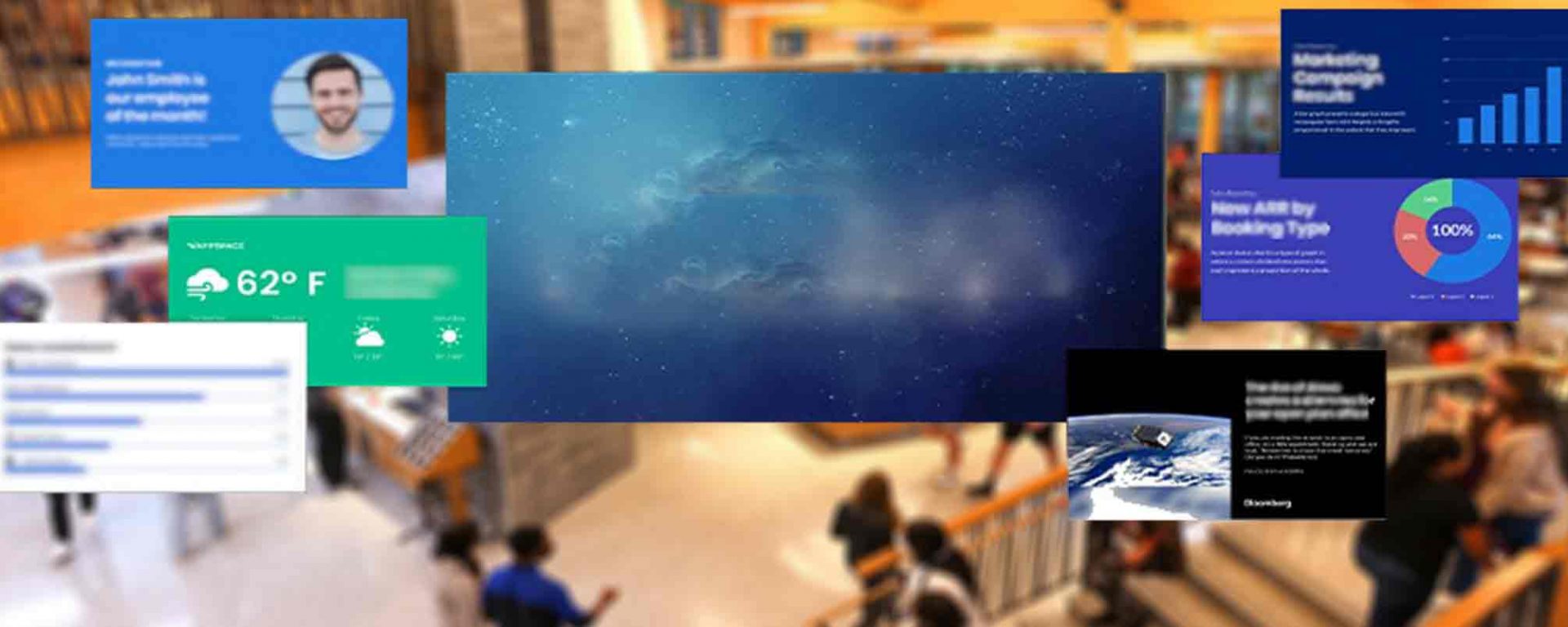In the bustling world of digital communication, grabbing and retaining attention is no easy feat. This rings particularly true for digital signage, where viewers are bombarded with information and have only fleeting moments to absorb messages. The critical message for successful digital signage is clear:
- keep it short,
- simple, and
- impactful.
In this blog post, we delve into the principles and practices of crafting accessible digital signage to foster inclusivity and equitable communication.
Keep it Short and Sweet
Real estate on digital signs is limited. So are viewers’ attention spans – we have between 5 to 12 seconds to convey our message. Brevity is paramount.
Craft messages that convey essential information. Ask yourself: “What is the most critical information?” Aim to express the message in 140-200 characters or less. This accommodates short attention spans and minimizes cognitive load.
Speak Plainly
Simple language is key. Avoid complex sentences, technical jargon, and idiomatic expressions. Clear and straightforward communication ensures universal understanding.
Harness the Power of Symbols
Symbols can enhance message comprehension, but they must be clear and meaningful. When using symbols, accompany them with text to provide context and clarity. Opt for well-known symbols for common actions.
Inclusive Design Considerations
Consider the diverse needs of your audience when designing digital signage.
- Incorporate audio captions for noisy environments or those with hearing impairments.
- Select fonts between 36pt and 48pt for optimal readability.
- Maintain high contrast between text and background to aid visibility.
- Tools like WebAim Contrast Checker, Venngage Accessible Color Palette Generator and Coolors Contrast Checker can help ensure sufficient color contrast. Strive to meet WCAG’s AAA contrast requirements.
Addressing Color Blindness and Image Clarity
Avoid color combinations such as green on black or black on red, that pose challenges for people with color vision deficiencies.
When overlaying text on images, prioritize readability by utilizing fades or backgrounds to enhance contrast. Ensure text is easily legible, even against complex backgrounds, to maximize comprehension. Use the squint test for a high level check.
Leveraging QR Codes
QR codes offer a convenient way to provide additional information. However, it is essential to recognize potential barriers. Make sure the sites QR codes lead visitors to are accessible. Ensure they are large enough and readable from a distance of about 10 feet.
At Swarthmore we provide alternative accessible options for accessing essential information like dining choices and campus events on The Dash
Embrace Inclusive Design
Prioritize inclusivity by considering the following:
- Accessibility
- Cultural diversity
- Readability
Conclusion
Effective digital signage requires thoughtful consideration of messaging, language, symbology, and design elements. Following these guidelines will help you create digital signage that is visually appealing, accessible, and fosters a more inclusive and equitable environment. Let’s embrace the power of accessible communication to ensure that no one is left behind in the digital age. Together, we can build a more inclusive world, one message at a time.
Resources
- Swarthmore’s Digital Signage Guidelines
- Squint Test
- WebAim Contrast Checker,
- Venngage Accessible Color Palette Generator
- Coolors Contrast Checker

